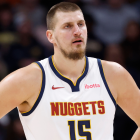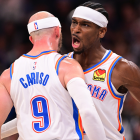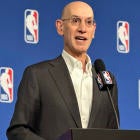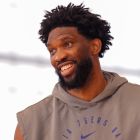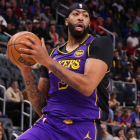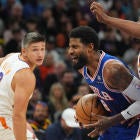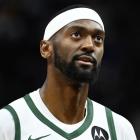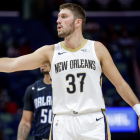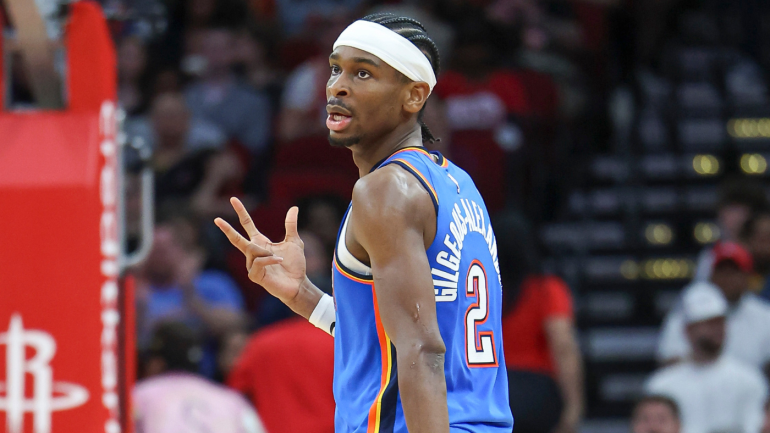
All-NBA Teams were announced on Wednesday, and with them came the conclusion of awards season in the NBA. Now we know who earned what honors, and more importantly, we know what it means for the financial futures of the players involved. All-NBA selections and either MVP or Defensive Player of the Year awards can make players with between four and six years of experience eligible for a maximum salary starting at 30% of the salary cap rather than 25% thanks to the Derrick Rose Rule, and under certain circumstances, players with between seven and nine years of experience can jump from 30% of the cap as their max to 35% through those same honors.
Now that we know who actually made the teams, we can dive into who's getting paid and what it means for their teams. Wednesday's All-NBA selections set up four superstars to earn massive contracts:
- Tyrese Haliburton will earn the 30% max via the Derrick Rose Rule after earning his first All-NBA selection. That raises the total projected value of the contract extension he signed last offseason from roughly $204 million to roughly $245 million, according to ESPN's Bobby Marks, though those numbers will not be finalized until the cap is determined in July. Indiana is fortunately well-positioned to pay Haliburton extra money. He is the only player on their books currently slated to earn more than $20 million next season, and even when you account for Pascal Siakam's inevitable deal, they should still come in well under the luxury tax with no major expenditures coming up.
- Anthony Edwards earned the same bump as Haliburton with his All-NBA selection. The difference is that Minnesota is in a much tougher financial position to absorb it. Prior to Edwards' bump, the Timberwolves were projected at $185.7 million in salary for next season, and that only accounts for 11 players. Now that he gets the Rose Rule raise, Edwards' salary will rise by roughly $7 million next season. That would take the Timberwolves past the second apron, which is projected at roughly $189-190 million, and that's before they even fill out the roster. Given the ownership drama surrounding the Timberwolves right now, it isn't clear how much of a luxury tax payment they are willing to make, and if the eventual outcome of this playoff run will affect it.
- Luka Doncic is not eligible to sign a contract extension this offseason. However, by making All-NBA teams both this year and last, he guaranteed that he would meet the two-out-of-three criteria needed to make himself super-max eligible in an extension next offseason no matter what happens during the 2024-25 campaign. According to Marks, the projected total on Doncic's potential extension would be over $346 million.
- Shai Gilgeous-Alexander is in the same boat as Doncic. He isn't eligible to extend this offseason, but has now made back-to-back All-NBA teams, ensuring his super-max eligibility for next season. However, his extension should actually pay him a little bit more than Doncic's, at least by the end. Why? Because Doncic has an option for the 2026-27 season that he would presumably decline to make way for a new deal. Gilgeous-Alexander does not, so his extension would start at 35% of the projected 2027-28 cap rather than the 2026-27 cap. With reports indicating that the league's new media rights deal will be extremely lucrative, the league-wide expectation is that the cap will raise by the maximum 10% annually moving forward. Gilgeous-Alexander will only be able to extend for four seasons if he signs next summer because NBA players cannot be under contract for more than six total years at a time. However, starting at that higher figure will put him in line to become the NBA's first $80 million per year player during the 2030-31 season, when, according to Marks, he would stand to make a projected $81,449,214. The 2024-25 cap winds up coming in above current projections, there is a chance that this positions Gilgeous-Alexander to reach $82 million during the 2030-31 season, meaning he would earn at least $1 million per season. Also worth keeping in mind here: the Thunder will presumably pay Chet Holmgren and Jalen Williams extensions worth the max (or close to it) that will begin during the 2026-27 seasons, so Oklahoma City is effectively operating under a two-year window in which it will be underpaying all of its key players. After that, the Thunder get expensive.
As for the 11 remaining All-NBA players? Most of them are already either at the 10-year experience line that automatically grants them eligibility for a 35% max or are on contracts that will take them there. That group includes Giannis Antetokounmpo, Nikola Jokic, Kevin Durant, Kawhi Leonard, Anthony Davis, Stephen Curry, Devin Booker, Domantas Sabonis and LeBron James. Sabonis did earn a $1.3 million bonus for his All-NBA selection though, per Marks.
That leaves two All-NBA players left to cover. The first, Jayson Tatum, was already eligible for a super-max extension this offseason by earning All-NBA selections in both 2022 and 2023. His extension will pay him a projected $315 million over five years, according to Marks.
Jalen Brunson, on the other hand, is ineligible for a super-max deal no matter what he does. Players can only get the super-max boost with the team that drafted them or a team that traded for them within the first four years of their career (like Indiana did with Haliburton). Brunson signed with the Knicks as a free agent after his fourth season, so he is stuck operating under normal extension rules this offseason. He can sign a typical veteran extension for a projected $156 million over four years, or he could potentially wait until next offseason, opt out of his contract and re-sign with the Knicks for a projected $270 million over five years. Newsday's Steve Popper reported Wednesday that all indications suggest Brunson is leaning towards the former, but only time will tell what he chooses.
That covers this year's group of All-NBA players. MVP winner Jokic has already been covered, and Defensive Player of the Year Rudy Gobert is already above 10 years of experience. Therefore, of the 17 players who theoretically could have made themselves eligible for extra money this awards season, four of them actually did so.









